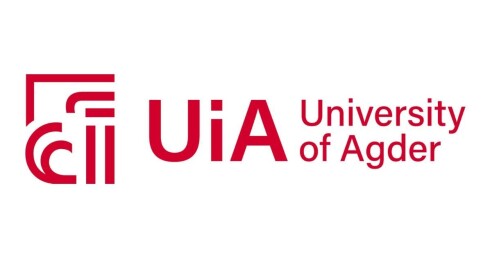THIS CONTENT IS BROUGHT TO YOU BY THE University of Agder - read more

The poets that changed religious thinking
Modernism is more than a goodbye to tradition. It is also an effort to remake religion and traditional thinking, a researcher notes in his new book.
In his book Modernism and Religion: Between Mysticism and Orthodoxy, Jamie Callison explores how poetry and art changed traditional religion and made it new.
“My book tells the story of the religious dimensions of modernism, which I think is an under-recognised and under-reported aspect of modernism,” Callison says.
Religion and poetry have inspired each other
Jamie Callison is associate professor at the University of Agder. His new book explores how religion and poetry have inspired each other throughout the 20th century.
Callison offers close readings of works by David Jones, T. S. Eliot and H.D. (Hilda Doolittle).
“Ezra Pound´s slogan for modernism was ‘Make it new!’ In my book I show how poets like David Jones, T. S. Elliot, and H.D. engage with religious ideas and thereby contribute to making religion new,” he says.
According to Callison, these poets viewed their works not just as static texts. They also saw them as living performances.
“Much like the liturgy in a church, their poetry came alive when spoken aloud,” he says.
He underlines how Eliot´s Four Quartets encouraged a performative aspect, with the poems containing instructions for speaking them aloud.
Poetry as a breathing experience
Callison emphasises the dynamic nature of modernist poetry. He sees it as a living, breathing experience.
“Poets like Eliot and H.D. treated their works as performances,” he says.
Their poems were meant to be spoken aloud. These poets understood the inherent power of oral delivery, akin to the resonance of religious rituals, adding depth and meaning to their verses.
A bridge between the sacred and the secular
According to Callison, their poetry is a bridge between the sacred and the secular world.
“A poet like Eliot crafted works that encouraged readers to reflect on the religious past and its impact on the present and future. Through their verses, these poets facilitated a contemplative experience, inviting readers to ponder the complexities of faith, tradition, and change,” he says.
Callison pushes back against the idea that these poets could fully replace religious questions with aesthetic ones, a viewpoint prevalent in modernism even today.
“Poets like T.S. Eliot, H.D., and David Jones grappled with religious questions in their work, making them accessible to secular audiences while preserving the depth and resonance of religious thoughts,” he says.
Making sense of cultural memory
“Part of what they do is making sense of cultural memory. They are making religious thoughts available to a secular audience, and then they kind of re-imagine the past,” he says.
He reminds us that Four Quartets is a war poem, written in the midst of the Second World War. It is a poem in which Eliot and most of Britain feel that they are going to lose this war.
“The poem approaches the idea of national loss. And it is invoking religious ideas as a way of consoling in this loss. The key is that the poem tries to connect with those ideas,” he says.
In that respect the poem is a sort of reminding.
Poets reimagine
“It reminds us about the religious past that we should remember. This kind of poetry is a way of reimagining, re-envisaging, and re-practicing religious ritual outside of the church. Perhaps what these poets show us is the afterlife of religious life and thinking,” says Callison.
What writers like H.D, Eliot, and Jones are doing in their poetry is trying to think about religious issues in a way that makes them understandable and palatable to secular audiences.
Callison underlines that poets do not just repeat the past or return to it; they reimagine and reinterpret it. He mentions the Nobel Prize winner of 2023, Jon Fosse, as a new example.
“Jon Fosse seems to return to Christianity in an avant-garde text. But I think the word ‘return’ is misleading. In an artist´s work, return is not just a return, it is a reimagination,”Callison says.

This content is paid for and presented by the University of Agder
This content is created by the University of Agder's communication staff, who use this platform to communicate science and share results from research with the public. The University of Agder is one of more than 80 owners of ScienceNorway.no. Read more here.
More content from the University of Agder:
-
The law protects the students. What about the teachers?
-
This researcher has helped more economics students pass their maths exams
-
There are many cases of fathers and sons both reaching elite level in football. Why is that?
-
How we used plants to protect ourselves from evil
-
What is it like for nurses to promote health behind bars?
-
This can make life easier for new maths teachers




































